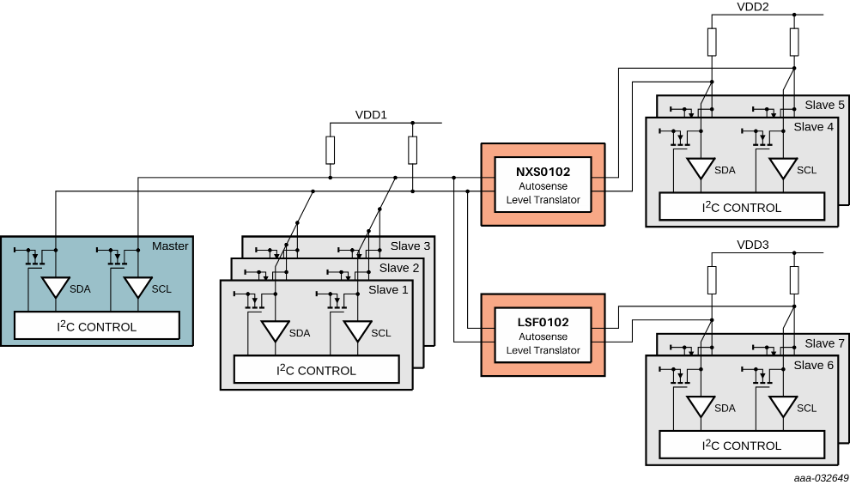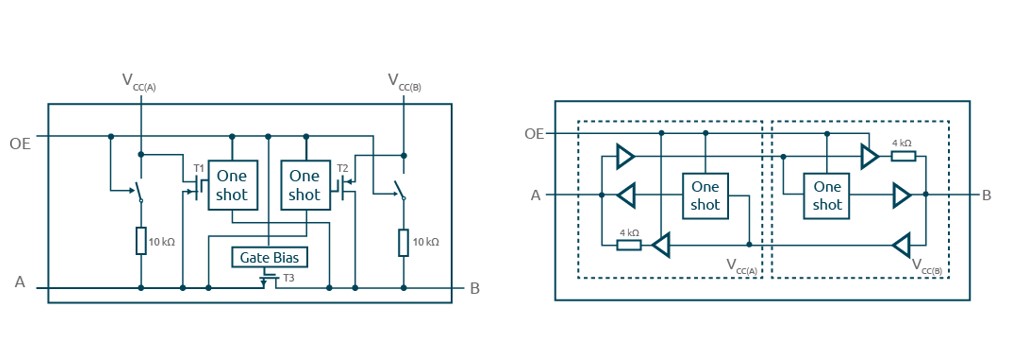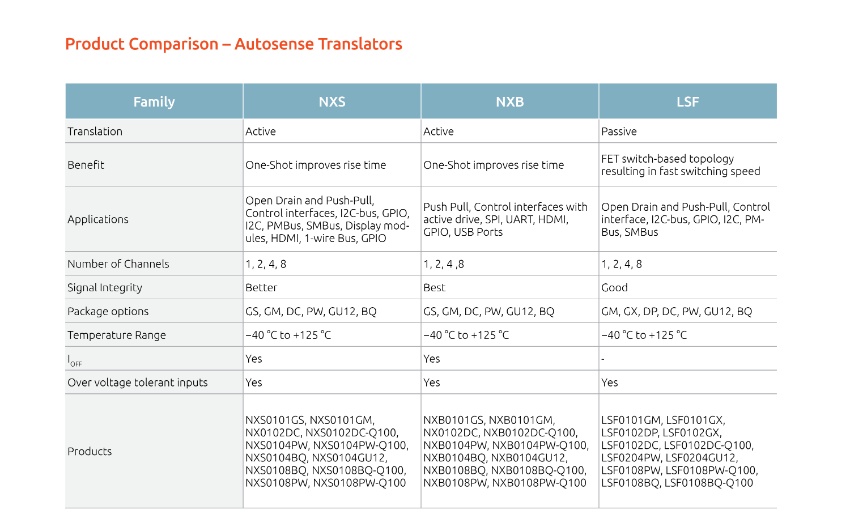Today’s modular and scalable microprocessor and microcontroller systems employ a range of lower I/O and core voltages. To efficiently connect data and control interfaces especially with older legacy peripherals can therefore be a challenge. Nexperia’s autosense portfolio overcomes this, providing an integrated voltage translating interface that brings flexibility and can be used for both high-speed push-pull buffered and open-drain applications.
The last decade has seen significant change in CMOS technology for microcontroller and microprocessor-based systems. Driven by demands for smaller systems, longer battery life and an overall reduction in bill of materials (BOM), this has resulted in the exponential growth of high-performance systems using lower voltage and lower power I/O standards (down to 0.7 V). These low-voltage / low-power trends have not just been adopted in the portable and wearable market applications, but also in industrial and automotive systems.
There is an inherent requirement that today’s applications need to use a mix of I/O voltages and power-supplies. For example, core digital control and data processing sub-systems often use a supply voltage of 1.2 V or lower. However, most of the analog and mixed-signal peripherals these digital devices interact with continue to operate at 3.3 V or even 5 V. Interfacing multiple signals and devices operating at different voltage domains can create complex system requirements, requiring multiple voltage translators for bridging devices, signals and I/Os.
Addressing increased complexity of multi-voltage systems
Naturally any voltage difference can be resolved by using a single translator (level shifter), so mixed voltage systems can interoperate as expected. But when a (master) microcontroller and multiple slaves (peripherals) with different voltage levels need to send and receive data via an asynchronous bi-directional interface, then integrated translators can be used to reduce complexity.
With new signal standards constantly emerging, many of today’s systems utilize much faster data rates, often over 100 Mbps, and need to support minimum propagation delay and channel to channel propagation skew. This is specifically the case for consumer or telecom interfaces such as Management Data Input Output (MDIO) and Secure Digital Input Output (SIDO). So, when the need arises for high speed, bi-directional, multi-voltage level translation, Nexperia’s Autosense portfolio (LSF010X, NXS010x & NXB010x) can assist engineers in simplifying designs with a cost effective, small form factor solution.
All devices in the portfolio have wide voltage ranges, allowing a single device solution for a large combination of new and legacy processors and peripherals. With the addition of automatic direction sensing to these bi-directional transceivers, no external direction pin is required. This not only matches well with the latest low voltage microprocessors allowing data to flow to and from any logic device, but it also offers a way to further reduce BOM in space-constrained designs.

Optimized interface performance
The inherent value of integrated level shifting solutions becomes evident as the number of data lines that need to be shifted is increasing for multiple applications. In addition to significant BOM saving achieved by moving to an integrated solution, these translators effectively eliminate any timing or reliability issues that can occur with multiple single translators.
In addition, Nexperia has optimised our 1, 2, 4 and 8-bit autosense portfolio to meet different interface needs. For example, NXS / LSF devices can be used for both push-pull buffered and open-drain applications making them ideal for simple IC-to-IC interfaces such as I2C, SMBus, PMBus, 1-wireBus, GPIO, Display modules, etc. Alternatively, NXB devices can be used in high-speed push pull topologies. They offer very good signal integrity, making them better suited for port communications including HDMI, SPI, UARTS and USB. Moreover, Nexperia’s patented NXS architecture helps avoid reflections and improves driver capability suitable for driving longer trace lengths up to 1 meter.
 NXS0101 NXB0101
NXS0101 NXB0101
Product family comparison
